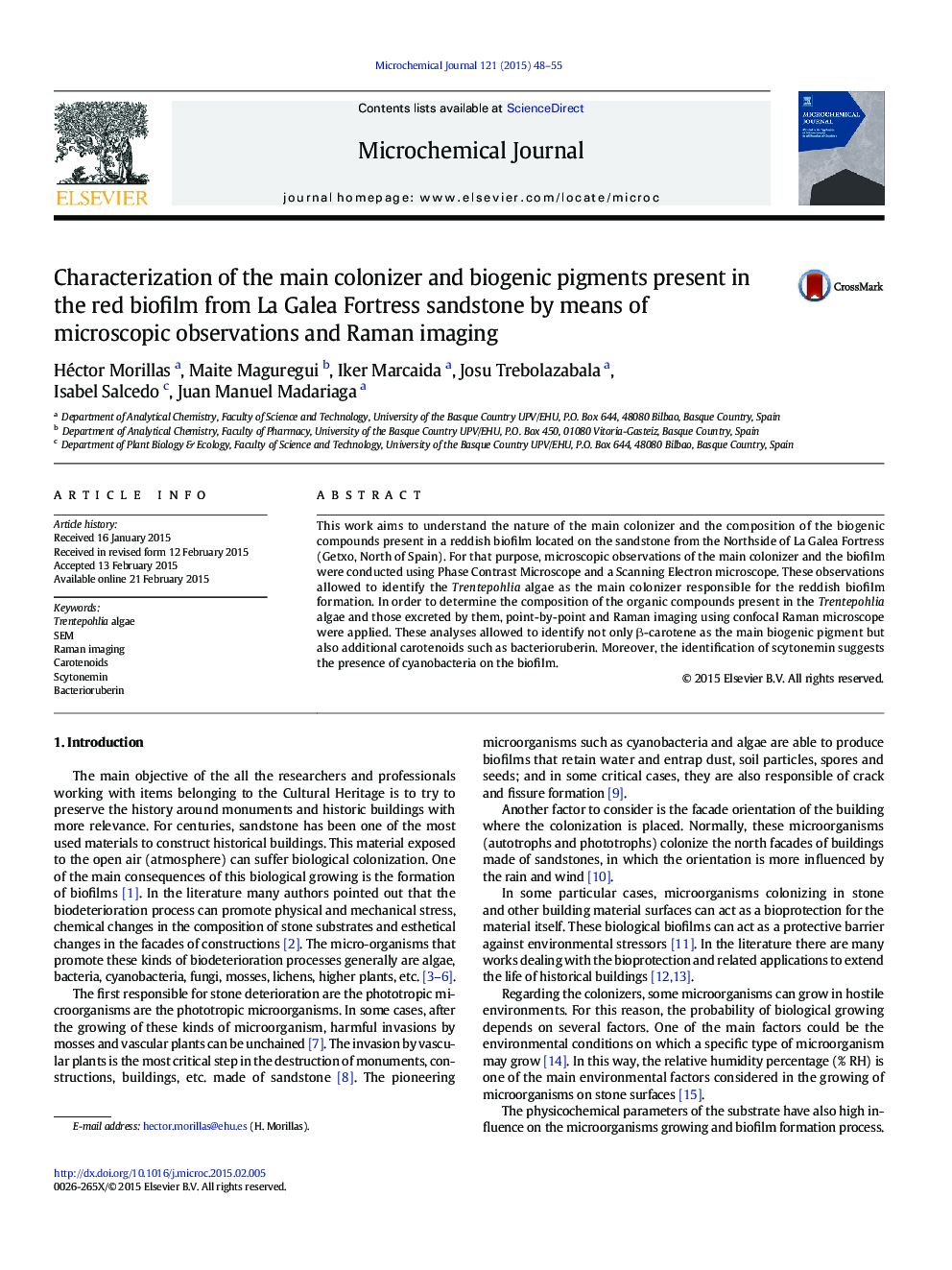| Article ID | Journal | Published Year | Pages | File Type |
|---|---|---|---|---|
| 1227681 | Microchemical Journal | 2015 | 8 Pages |
•PCM and SEM are helpful to identify the presence of Trentepohlia algae in the red biofilm.•Some of the elements identified on sandstone matrix by SEM/EDS can act as micronutrients for Trentepohlia.•Sandstone matrix composition was evaluated using micro-Raman spectroscopy and SEM-EDS.•Micro-Raman spectroscopy is useful to identify the presence and distribution of biogenic pigments (β-carotene, scytonemin and haloarchaeal C50 carotenoid) in the red biofilm.
This work aims to understand the nature of the main colonizer and the composition of the biogenic compounds present in a reddish biofilm located on the sandstone from the Northside of La Galea Fortress (Getxo, North of Spain). For that purpose, microscopic observations of the main colonizer and the biofilm were conducted using Phase Contrast Microscope and a Scanning Electron microscope. These observations allowed to identify the Trentepohlia algae as the main colonizer responsible for the reddish biofilm formation. In order to determine the composition of the organic compounds present in the Trentepohlia algae and those excreted by them, point-by-point and Raman imaging using confocal Raman microscope were applied. These analyses allowed to identify not only β-carotene as the main biogenic pigment but also additional carotenoids such as bacterioruberin. Moreover, the identification of scytonemin suggests the presence of cyanobacteria on the biofilm.
